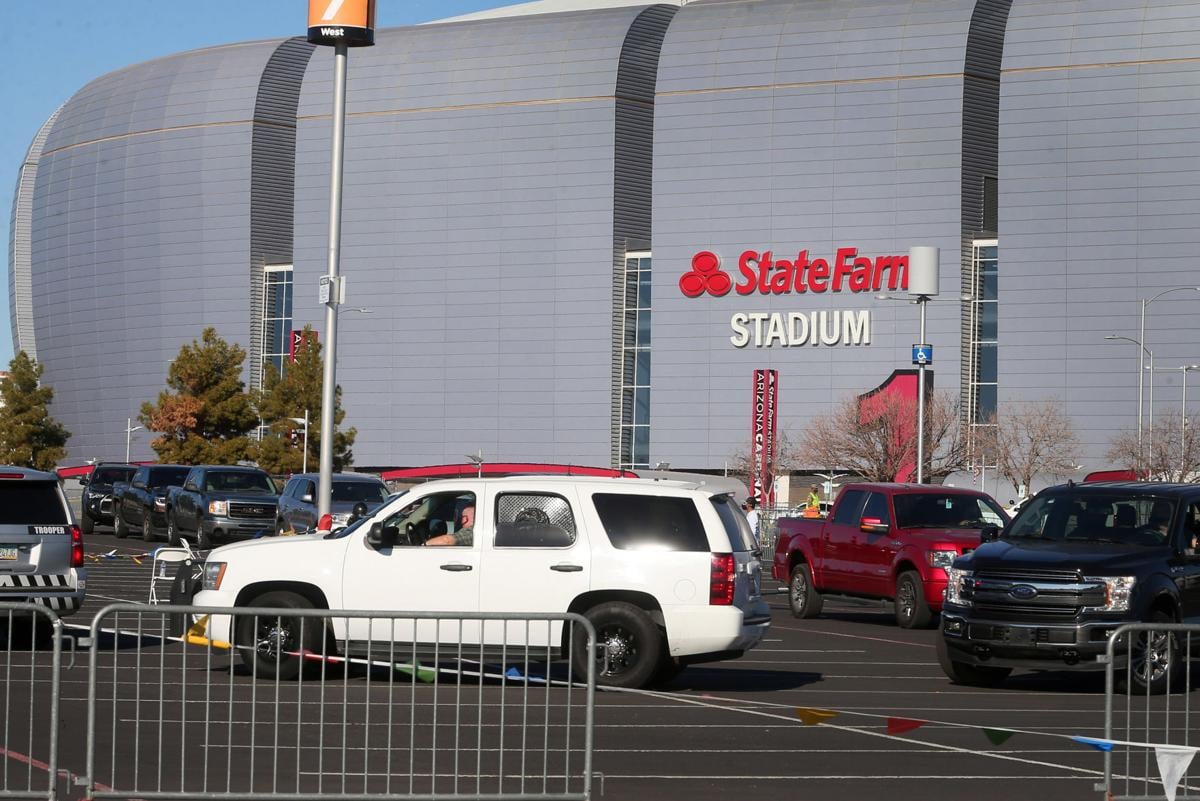PHOENIX — Citing medical risks for older adults, state health officials are making COVID-19 vaccines available for adults at least 55 years old.
But that doesn’t apply everywhere just yet — including not yet in Pima County, which must meet certain inoculation thresholds before opening up to the 55-64 age group.
Beginning at noon Tuesday, March 2, the Arizona Department of Health Services will open up about 50,000 appointments for those 55 and older at the state-run vaccination sites at State Farm Stadium in Glendale and Phoenix Municipal Stadium, for visits starting Thursday, March 4.
Anyone from any county is free to book a vaccination there if in an eligible group.
Watch: Johnson & Johnson official on vaccine distribution
Johnson & Johnson has started shipping out nearly 4 million doses of its newly authorized, one-shot COVID-19 vaccine.
For those looking for something closer to home, however, it will take more time.
That’s because the change in rules, made on the advice of the state’s Vaccine and Antiviral Prioritization Advisory Committee, applies only to counties where at least 55% of residents age 65 and up already have received their first dose. And most counties are not quite there.
Maricopa County has hit that threshold, which is why the two state-run sites in the Phoenix area will start taking appointments for those ages 55-64, said Dr. Cara Christ, the state health director.
By contrast, she said, Pima County is only at 47%, a figure she called “pretty close.”
That means the vaccination sites run by Pima County, as well as the state-run site at the University of Arizona in Tucson, will for now continue to require that people be at least 65 years old for an inoculation.
But Christ said there is a workaround of sorts.
“Say that they hit 52% (of those 65 and older) and nobody’s signing up for appointments,” she said. “If a county feels that they’ve met the demand, they can move on to the next group earlier than that.”
The change announced Monday is a sharp departure from the priority-based system the state had been running. Except for the oldest Arizonans, that put people in line generally based on their occupations, with those 65 and older being added only relatively recently.
But Christ says the change makes sense, citing figures that those in the 55-plus age group are far more likely to die from the virus. And adding everyone older than that, she said, would cover anywhere from 56% to 66% of Arizonans who have medical conditions that place them at severe risk.
“What we’re seeing is that the data is showing us that as you move up in groups of 10 years it significantly increases an individual’s risk, regardless of chronic medical condition, for hospitalization and death,” Christ said. “It made sense to move to an age-based prioritization.”
What is also does is sharply cut the wait time for those 55 and older.
We are currently in a group called Phase 1B with certain priority groups eligible within that phase. Subsequent phases and priority groups will still open in turn as vaccine doses become available. That includes front-line essential workers, ranging from grocery store clerks and bank tellers to bus drivers and funeral directors. Christ said that is a “huge group,” likely more than a million Arizonans.
Also in the next category were adults with high-risk medical conditions, but only if they were living in a congregate care setting like a nursing or assisted-living facility.
Other high-risk adults were in Phase 1C.
“It was going to take us quite a while before we even got to 1C,” Christ said.
And for those 55 or older who don’t have an underlying medical condition, the old system put them in Phase 2, a group that would not be eligible for even a first dose until some time this spring or summer.
Now they won’t have to wait that long.
“We’re going to start going 55-64, all adults, whether you have a chronic medical condition or not,” Chris said. She figures that make sense, given the number of people in that age group that have medical conditions.
The new system also sets the stage for vaccines for younger people.
Christ said the same rules would apply: When a county gets at least 55% of people age 55 and older vaccinated, then it can open the doors to those 45 and older. And so on.
The fact that Maricopa County is now opening up appointments for those 55 and up does not mean anything is being denied to other counties, some of whom are still struggling to meet the needs of older residents, said Arizona Department of Health Services spokesman Steve Elliott.
He said each county gets its own allocation based on population. So the doses being given out at the two state-run sites in Maricopa County are from that county’s share of the vaccines and do not cut into the supply elsewhere.
He noted that the state-run sites use the Pfizer vaccine because they have the facilities to keep it at the sub-zero temperatures necessary; rural counties have been shipped only the Moderna vaccine, which can be kept in regular freezers.
Elliott said some rural counties may have run short recently because of delays in shipments of the Moderna vaccine linked to the storms in Texas, though he said they should now be back on schedule.
There’s something else in the changes Christ announced Monday.
She said counties that have sufficient supply now will have the ability to vaccinate those front-line essential workers who, under the current priority system, are not yet eligible.





